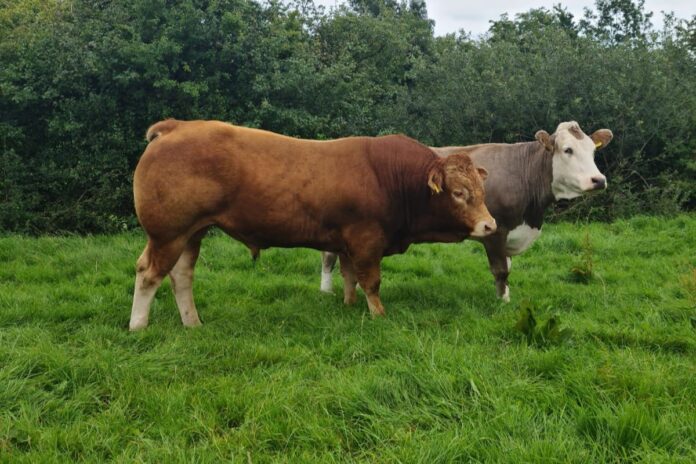Spring-calving suckler herds
In this article, CAFRE’s Jack Friar discusses breeding the spring-calving herd. He discusses the importance of BCS and a rising plane of nutrition, pre-breeding scanning, the benefits of a tight calving
Attention is now moving towards the breeding season for spring-calving suckler herds.
The usual body condition score of 2.5+ and also a rising plane of nutrition are important to help get cows back in calf quickly and achieve a calving interval close to 365 days.
Pre-breeding scanning of suckler cows is not a task carried out on every cow. Although, you should consider it for a cow that had a difficult calving, an infection and required a ‘wash-out’ or cows that retained their placenta after calving.
Defined breeding season
Set a defined breeding season with a definite start and end date for all cows to calve within 12 weeks. Aim for 60% to calve in the first month and 80% by the end of the second month.
The advantages of this include:
- Reduced labour;
- Better herd management at calving;
- Less risk of disease spread from older to younger calves;
- Increased performance in terms of weaning weights;
- More even/uniform batches of calves to sell;
- Increased number of replacement heifers that reach a suitable weight for breeding and calving at two years of age.
If you think this is unachievable as your calving period is usually spread over four or five months, consider taking bulls out two weeks earlier each year to gradually reach a 12-week calving period.
You can achieve this in three to five years.
Breeding replacement heifers for 24-month-old calving
The aim is to calve replacements at 24 months of age. Although there is still some reluctance to try this, there are many benefits.
Some of the advantages of calving heifers at 24 months of age include:
- Allows for faster genetic progress in the herd;
- Lower rearing costs and quicker payback of rearing costs;
- Help towards reducing the carbon footprint of the herd;
- Increased lifetime output of cows, one more calf is produced during their time in the herd.
Breeding season length and sire selection
Unlike cows, heifers should only have a breeding season of eight weeks. This allows heifers to be served at least twice. After this, you should cull heifers, not in-calf, as they are likely to have future fertility issues.
Having a four-week shorter breeding season also allows extra time for recovery after calving and to resume cycling again before the start of the next breeding season.
Sire selection is critical for making two-year-old calving work. Use an easy calving bull so that the size and shape of the calf allow it to be born easier.
Bull selection should also focus on low calf birth weight and short gestation length to reduce the risk of calving difficulties.





